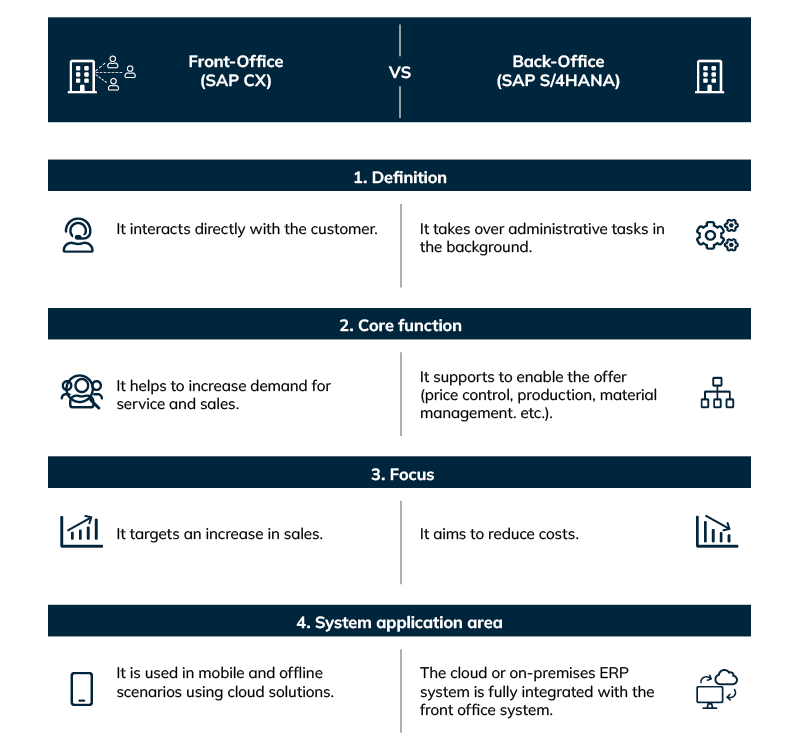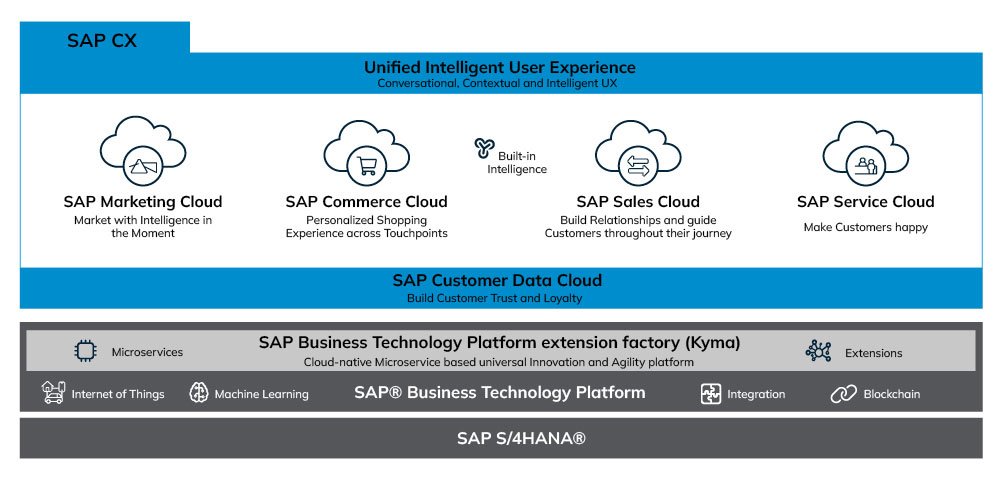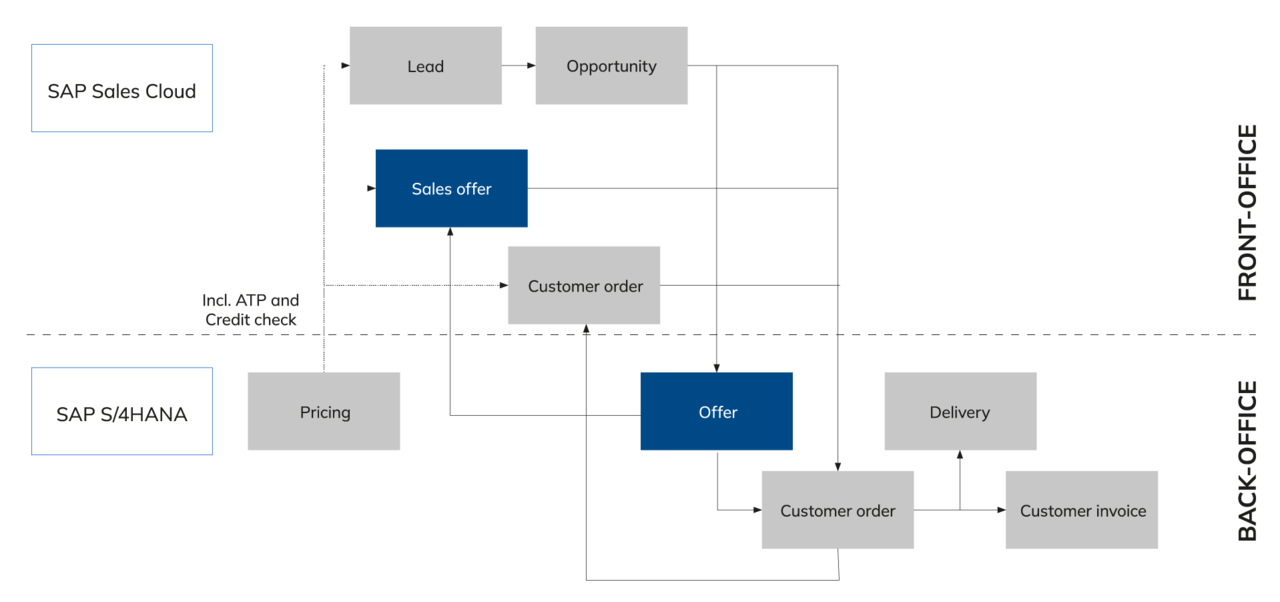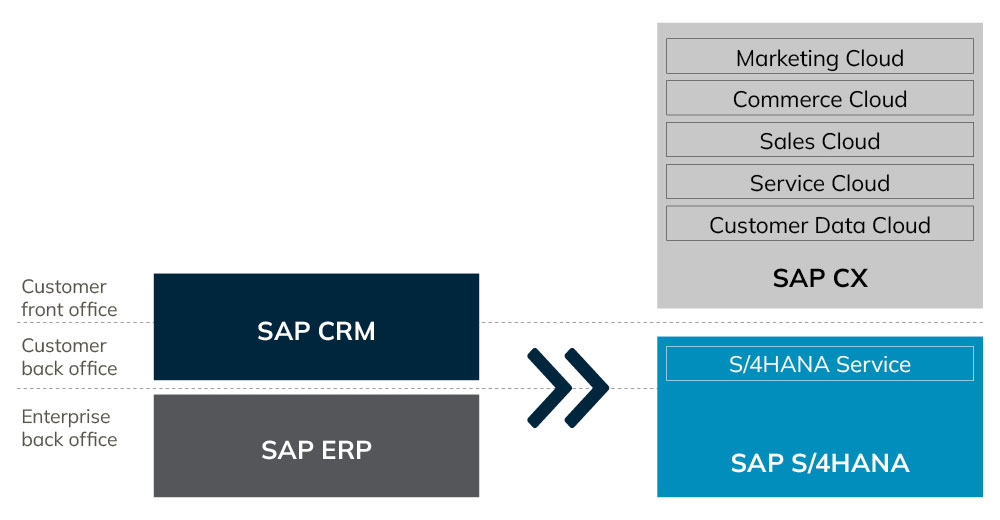SAP CX - The ideal SAP system landscape of the future
Nowadays, the pure competitive advantage of a product through market and customer proximity has lost importance, as globalization leads to a homogenization of the product world. The competitive advantage is therefore additionally decided by the efforts in customer orientation. Customer loyalty and the value of a customer have increased over the years. Accordingly, increased emphasis should be placed on front office solutions when designing the customer experience (CX) system landscape in order to be able to meet this trend as a company.
Front office vs. back office
But where exactly are the main differences between front and back office and why should the functional areas be structurally separated?

Figure 1: Front office vs. back office
The following figure shows the areas in which the process components are used.

Figure 2: Front-office vs. back-office company cross-section (source: SAP)
SAP system landscape of the future
In recent years, SAP has added more and more front-office solutions to its product portfolio in connection with the cloud-first strategy in order to be able to offer a fully comprehensive SAP system landscape in this way, which extends the widespread ERP system. With the help of the new middleware in the form of SAP Business Technology Platform, it is possible to integrate these solutions within and outside the SAP cosmos. In this way, other future technologies can also be integrated into the system landscape to support the front and back office. These include the Internet of Things, machine learning, and various web service-based interfaces for seamless data integration. As a result, SAP envisions the following future system landscape from its own portfolio.

Figure 3: SAP system landscape of the future (based on SAP)
End-to-end process across front and back offices
With this increasing system landscape complexity, new challenges arise for the organization and management of the functional areas. Questions arise as to where which processes should be implemented, what data is required for this, and what the integration paths between the various systems should look like. As a general rule, higher-level processes such as the "lead-to-cash" process should run in the system that is specialized for this process. In this example, SAP Sales Cloud would therefore be largely involved in the process, as it also focuses on the presales process for leads and opportunities in addition to the feature-rich sales process. Meanwhile, this presales process is underrepresented in the back-office system such as SAP S/4HANA. S/4HANA primarily supports the SAP Sales Cloud in the "lead-to-cash" process, in that price processing or billing takes place in the back-office core, while customer interaction and sales planning are located in the front office.

Figure 4: Front and back office sales process example (source: based on SAP)
As a result, SAP presents the ideal weighting of the function shares with regard to the two office views per subarea as follows.

Figure 5: End-to-end process across front and back office (adapted from SAP)
Summary
SAP is paving the way to a cloud-oriented system landscape with a comprehensive front office and a powerful back office in the background. According to SAP, the CX system landscape used in many companies to date - consisting of an ERP system and a CRM system - is a thing of the past. SAP underlines this by discontinuing CRM system support until 2027 at the latest. According to this, the transformation of the old system landscape into the future looks summarized as follows:

Figure 6: Transformation to a future-proof system landscape (based on SAP)
If you would like to get a picture of the future SAP system landscape for yourself, you are welcome to request a self-guided demo from us that illustrates integrated processes between front and back office in practice.
Contact our expert

